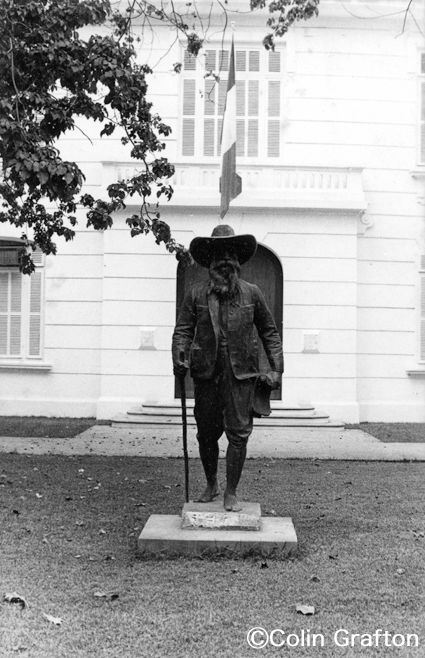


















Vientiane
Click image to view
Vientiane was really just a string of villages along the Mekong River. There were two main streets running east to west— Rue Setthathirath and Rue Samsenthai, both named after kings—and the wide Lan Xang Avenue running north from the river towards the Patuxai, or “Victory Monument”. Whose victory? The general responsible for its foundation had long disappeared.
The first photographs I took were with a little Olympus Pen camera that I bought secondhand from an American housewife for $5. I remember the price because it was such a good deal. It had speeds and aperture settings, but no light meter, so you had to guess the right combinations. It was also half-frame, so you could get double the number of pictures on a film. The first few pictures depicting the languid street life of Vientiane in the late afternoon came from the Pen. I was so pleased with them and inspired to take more, that I asked someone who was on a trip to Singapore to buy me a ‘real’ camera. He got me a Pentax Spotmatic SLR.
I didn’t take many photos of people at first. I was captivated by the play of light and shadow in the streets and temples. The view from the Victory Monument shows the largest building in Vientiane at that time, the central police station and immigration office, on the left. That (pronounced ‘tat’) Dam, the Black Stupa, is one of the oldest monuments in Vientiane. Legend says it used to be covered with gold and was guarded by a seven-headed naga. During the Siamese-Lao war in the 1820s, the Siamese stripped it, and that’s why it is now black.
There were still many French colonial style buildings, many of them housing government offices. One near the morning market served as an ‘embassy’ for the communist Pathet Lao delegation. It was surrounded by a small area of ‘no-man’s land’, but you could apply for permission to visit at the office of a Royal Lao Govt. general on the Thadeua Road. I did so and went with Paul Mahoney to see PL representative Soth Petrassi there. We had an interesting conversation about French colonial history, and Soth Petrassi presented us each with a souvenir bracelet allegedly made from the metal of downed American planes, and inscribed to that effect. Petrassi was a member of the first Pathet Lao government after the revolution in 1975. Then he disappeared.
In front of the French Embassy stood a statue of Auguste Pavie, who is said to have walked around Laos barefoot. Despite this reckless behaviour, he lived to the grand old age of 78. Before coming to Laos, he had spent three years in Kampot, where he supervised the building of a telegraph line between there and Phnom Penh.
The Patuxai (Victory Monument) is the centrepiece of Vientiane, built in the sixties with cement supplied by USAID to construct a runway at the airport—hence dubbed ‘the vertical runway’. Nevertheless, I think it is impressive, with some very nice interior mosaic decoration inside the arch, and certainly much more interesting than a runway. The gentleman who supervised its construction was an army captain, the father of our friend Chanthasone Inthavong.

This crappy old hand-drawn map of Vientiane is the only one I could find that showed Heng Boun Street and landmarks like The White Rose and the Viengvilay Hotel, now long gone. An interesting detail is “Sadam Kiet-banana split” which goes to show how rare such a luxury was in those days. The only banana split in town!